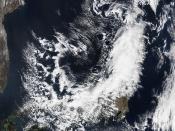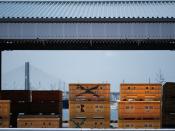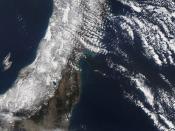Japan floats like a dismembered seahorse along the eastern rim of the Asian continent. Around 10,000 years ago, during the last big melt, sea levels rose enough to flood the land bridge connecting Japan with the mainland. Today Japan consists of a chain of islands (four major ones and some 3900 small ones) riding a 3000km (1860mi) arc of mountains, the tallest of which is the perfectly symmetrical Mt Fuji (3776m/12,385ft). Many of these mountains are volcanic, blessing the islands with numerous hot springs and spectacular scenery, but at the same time bringing the danger of earthquakes and tsunami (tidal waves). Japan has the dubious distinction of being one of the most seismically active regions of the world. It is calculated that the country gets around 1000 earthquakes a year, most of them too small to notice without sophisticated seismic equipment or a very elaborate hairstyle.
Japan's latitudinal spread, ranging from subtropical in the south to sub-arctic in the north, makes for a wide diversity of flora and fauna.
Much of what you see in Japan today isn't what was there to begin with. This is not just because of Japan's reckless flight into modernity (deforestation, pollution and acid rain) but also because of the relatively recent large-scale importation of plants from Europe and the USA. Fortunately, the sheer inaccessibility of much of Japan's mountainous topography has preserved areas of great natural beauty - in particular the alpine regions of central Honshà « and the natural parks of Hokkaido. Japan's largest carnivorous mammals are its bears - a brown bear (found in Hokkaido) can grow to a height of 2m (6.5ft) and weigh up to 400kg (884lb). Animals unique to Japan include the macaque and the giant salamander. The Iriomote wildcat, found in the Okinawa island...


